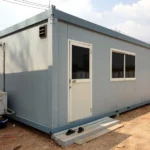In this article, we’ll go more in-depth about what engineering tolerances are, why they’re useful, and when it’s prudent to implement engineering tolerances as part of the manufacturing process.
What are Engineering Tolerances?
Tolerance is the acceptable amount of variance, higher or lower, on either end of an ideal measurement. While engineering tolerances can be utilized in many different units of measurement, including temperature and humidity, in mechanical and structural engineering they are most often applied to physical measurements, such as volume, angle, and depth.
Why Does Tolerance in Engineering Matter?
Precise measurements are often very important in engineering. For instance, following universal manufacturing guidelines, bolts of a certain size made by one company must fit together and operate properly with nuts made by another company. The best way to ensure this type of precision is by using engineering tolerances.
Variation is inevitable in manufacturing, whether pieces are being cut by machines or by hand. If you don’t keep those variations in mind, you’ll end up with parts that don’t fit together as planned, leading to a waste of time and resources. Utilizing tolerances will keep you on track and lessen the risk of failure due to mismatched or misaligned components.
When Should Engineering Tolerances Be Used?
Studies have found that defects caused by unaccounted-for variance in dimension and measurements are some of the most common and costly mistakes among construction projects. This indicates that proper tolerance designation and management is a key factor in keeping construction projects on track.
That said, implementing tolerances must be done intentionally and after thinking through your project thoroughly. If you demand a specific degree of precision out of every manufactured piece, you risk increasing your manufacturing costs unnecessarily and holding up the project. Be mindful of the areas where your project needs precise measurements, and figure out the tolerance appropriate for those specific parts.
The Bottom Line
It may seem counterintuitive, but assigning an acceptable variance in measurement to your more precise engineering projects will go a long way toward ensuring the final product fits together as it’s meant to.
Learning to create and implement engineering tolerances will lead to more polished work, less waste, and a higher chance of success upon the project’s completion.





